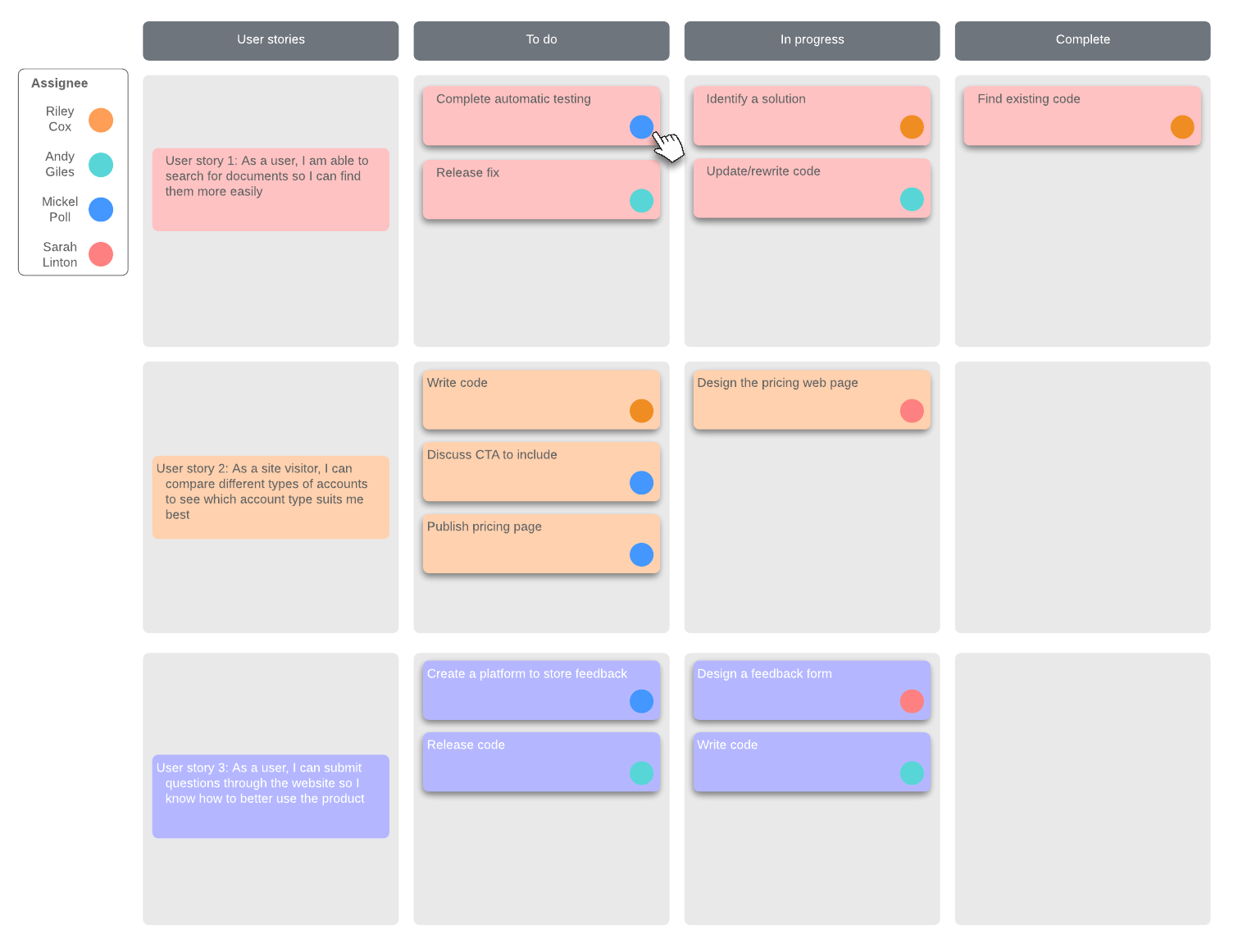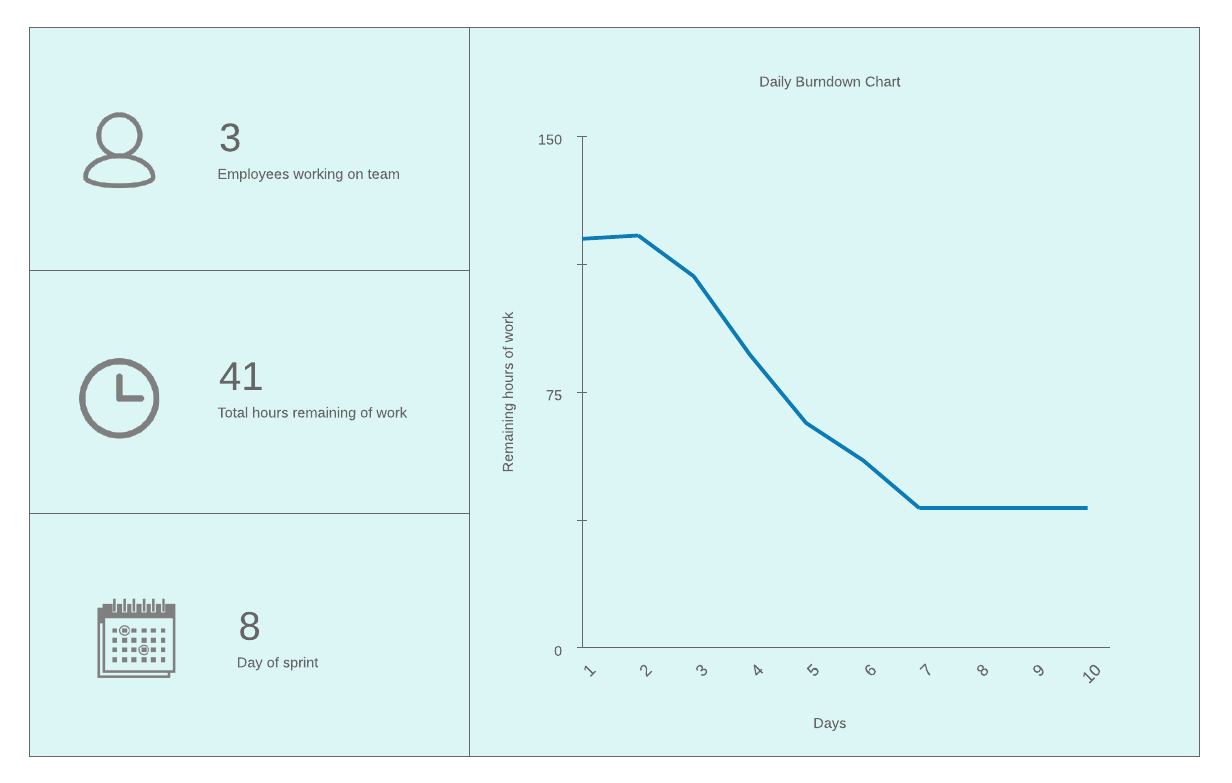
Scrum for one: A tutorial on adapting Agile Scrum methodology for individuals
Reading time: about 6 min
Many teams, particularly in software development, use Scrum methodology to manage workflow, deliver viable products faster, and continuously iterate. But what if you're working solo?
You can still take advantage of Agile Scrum methodology to manage your workflow and increase productivity. Read this tutorial to discover how to adapt Scrum for one.
What is Agile Scrum methodology?
Before we get into how you can use Scrum for individual project management, let’s review the basics. Scrum is an Agile project management methodology. Traditionally, it’s used by teams who want to get more work done at a faster pace. Teams use iterative two-week “sprints” to tackle projects incrementally.
These two-week sprints are the most distinguishing feature of Scrum. Each sprint begins with sprint planning, during which the team meets to collaboratively create a backlog—a list of tasks they intend to accomplish during the sprint.
Over the course of each sprint, the team holds daily Scrum meetings of 15 minutes or less. Members of the team review the previous day’s work, discuss the upcoming day’s work, and identify any roadblocks.
At the end of the two weeks, the team holds a sprint review. Team members look back on the sprint, identifying things that worked well and things that need improvement. This review lets the team make any necessary process changes before beginning another sprint. As a result, the team should work better and faster with each successive sprint.

Need a more comprehensive look at Agile Scrum methodology? We have you covered.
Read moreBecoming your own Scrum master
The Scrum team structure includes a product owner, a Scrum master, and the development team. To adapt Scrum for individuals, you would need to fulfill the responsibilities typically handled by each of these roles. Here’s how you can adapt them.
Product owner
In traditional Scrum, the product owner is the go-to source for information about the product. They have the end in mind from the beginning, and they share that vision with the rest of the team. They are responsible for communicating and ordering the product backlog items. They should be available throughout the project to field questions, provide clarity to the team, and facilitate communication.
As your own product owner, you must clearly define your end product. Identify features and requirements, and record these in clear detail for later reference. You might even create a user flow diagram or low-fidelity mockup to map your parameters.
When applying Agile for individuals, you’ll also need to keep in mind that delivery is your ultimate goal. If you find yourself getting bogged down in the development process, try to look at the project from a product owner’s perspective. As you remind yourself of what is important in the project, you can avoid unnecessary delays because of unimportant details.
Scrum master
The Scrum master is conventionally responsible for facilitating a smooth sprint process. They address roadblocks during the sprint, including making handoffs between development team members.
As your own Scrum master, you will need to problem-solve to remove roadblocks. This requires taking a hard, fair look at your work. If, for example, you find that working solo makes it easy to get distracted, act as your own Scrum master to find ways to stay focused, such as implementing the Pomodoro technique or timeboxing. Likewise, if you keep running up against problems with the requirements, use your Scrum master role to identify the issues and find ways to fix them.
Development team
The development team is composed of all individuals creating deliverables on the project. This team is responsible for creating the sprint backlog and adhering to a definition of done. The developers hold each other accountable and collaborate to complete the sprint goal.
Being your own development team is likely the easiest role you’ll take on, as you will simply be doing the work that you would do anyway. Keep in mind, however, that a Scrum development team is self-managed and self-motivated to complete the sprint. Approach your project with that attitude.
Also, in adapting Agile for one person, you’ll need to keep track of process flaws to address at the end of the sprint. While you won’t be improving your collaboration with other team members, you can still improve your own personal process. Keep records throughout your sprint to make this easier.

Learn more about Scrum and how to implement it in our in-depth guide on Agile frameworks.
Read moreAdapting the Agile Scrum process
Now that you can take on each role yourself, you can adapt the steps of the Scrum process for your own projects.
1. Plan your sprint
Dedicate time to planning your project. Remember, you’ll need to act as the product owner to define the product requirements, as well as the Scrum master and development team to plan your process and create reasonable goals for each sprint. This sprint planning phase will guide you through your next two weeks, so ensure you are thorough.

Better understand the benefits of sprint planning, and learn how you can get started.
Read more2. Conduct daily Scrums
Schedule time each day to review your previous day’s work to identify successes and pitfalls. Then, act as a Scrum master to brainstorm solutions for any problems you identified. Plan what you’ll do with your upcoming day, referring to your Scrum board or other project management system.
3. Review your sprint
At the end of the two weeks, think like a development team to consider the flaws and wins of your sprint process. Consider the project from the product owner's perspective as well, evaluating how closely the results align with the outlined requirements.
Applying traditional elements of Scrum for individuals
There are a few other components of Scrum Agile methodology that you might find helpful in your personal process, too.
Product backlog
Your product backlog is created at the beginning of a project. It lists all the tasks that must be accomplished by the project’s end, making it easy to see what you have left to do. As an individual, you’ll be solely responsible for completing each task. You can reorganize your product backlog as necessary to reflect the project’s changing priorities. You’ll draw from this product backlog to create your sprint backlog.

Scrum board or Kanban board
Consider creating a Scrum board so you have a quick visual reference of what you have already accomplished and what tasks still need to be completed, like a to-do list for your sprint. Scrum boards are structured in a particular way to limit work in progress and prevent changes from happening in the middle of the sprint.
If you would like more leeway (you are working solo, after all), you can try out a Kanban board—learn the differences of Scrum boards vs. Kanban boards.
To the left, your board will contain your sprint backlog, which is created during sprint planning lists all the tasks you must accomplish during your two-week sprint. As your own development team, you can reprioritize these within your sprint to facilitate their completion. Then you can drag tasks into columns such as “In progress” and “Done” to keep track of your work and show project status to any stakeholders.

Burndown chart
A burndown chart serves as a visual display of what you have left to do in a sprint. This chart makes it easy to see your progress with a quick glance.

As you adapt Scrum methodology to manage your individual work, you may not be able to perfectly recreate a team Scrum process, but you will be able to benefit from many of Scrum’s strengths. Scrum will require you to set clear expectations, prioritize the most important tasks, and adapt your processes with each sprint. You can accomplish all of these goals with Lucidchart’s customizable templates. With Lucidchart, you’ll be on the path to successfully Scrum on a team of one.

Learn how you can use Lucidchart to successfully implement any Agile methodology with teams of any size.
Read moreAbout Lucidchart
Lucidchart, a cloud-based intelligent diagramming application, is a core component of Lucid Software's Visual Collaboration Suite. This intuitive, cloud-based solution empowers teams to collaborate in real-time to build flowcharts, mockups, UML diagrams, customer journey maps, and more. Lucidchart propels teams forward to build the future faster. Lucid is proud to serve top businesses around the world, including customers such as Google, GE, and NBC Universal, and 99% of the Fortune 500. Lucid partners with industry leaders, including Google, Atlassian, and Microsoft. Since its founding, Lucid has received numerous awards for its products, business, and workplace culture. For more information, visit lucidchart.com.
